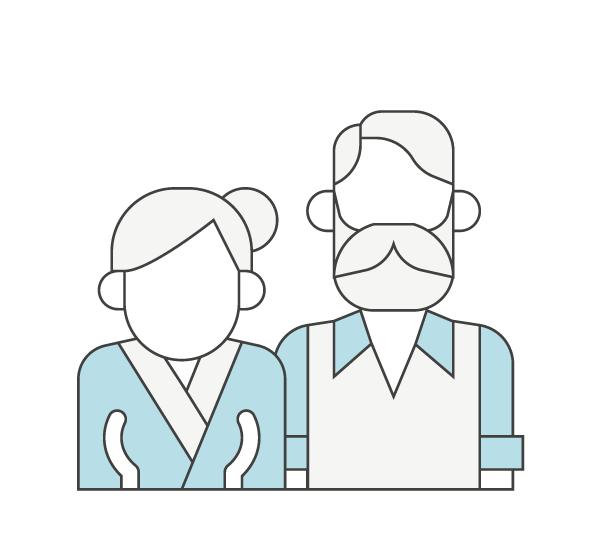
Older people
Globally, the population is ageing and the World Health Organisation (WHO) predicts that, by 2050, the population aged 60 years or more will double, whilst those aged 80 years or more will number 400 million persons.
The ageing process is not uniform across the population, there is no a “typical” older person. A large part of this diversity arises from people’s physical and social environments and the impact of these environments on their lifestyle, opportunities and health behaviors. Mobility opportunities are part of these facilitating or hindering environments.
From the travel behaviour perspective, older people have a quite varied routine compared to people who spend most of their day in schools or workplaces. When fully independent, mobility needs of the eldest are mainly linked to socialisation, pursuing their own interests and activities, caring for grandchildren and family support. Often, physical constraints affect travel behaviour and needs, especially when living alone and relatives are far away. The need to monitor personal health condition is another important factor affecting travel choices, therefore easy access to healthcare services and public facilities must not be neglected.
Circumstances and life conditions can evolve rapidly and the risk of social isolation and loneliness is deeply increased by poor mobility choices. In addition, frailest older adults may live in permanent or non-permanent reduced mobility conditions.
In the context of mobility services, new technology represents a powerful tool to help reduce loneliness and increase autonomy, since it gives older adults more self-reliance and connectedness. Differently in health-care services, technology if often perceived by users as a tool of isolation (e.g. distance-monitoring). Despite the increasing number of older adults accessing the web, a strong digital divide between older adults and younger people still exists. Moreover, an internal divide exists also among those who actively seek connection and those who are not interested or afraid of it. Older people are less keen to use new smartphones since they rather maintain routine gestures with the old ones. They are often not reached by a fast-speed connection, especially if they live in rural areas, or aren’t aware of its benefits.
Understanding travel choices and use of digital mobility apps across age groups is of paramount importance to ensure solutions are designed to fit their needs. To this end, INDIMO will focus on services related with pedestrian mobility and with product delivery for this target group.
References:
https://www.who.int/news-room/fact-sheets/detail/ageing-and-health
https://ec.europa.eu/eurostat/cache/infographs/elderly/index.html
https://ilcuk.org.uk/the-future-of-transport-in-an-ageing-society/
Su, F. and M.G.H. Bell, Transport for older people: Characteristics and solutions. Research in Transportation Economics, 2009. 25(1): p. 46-55.
